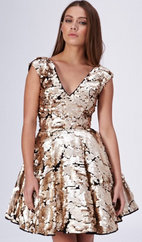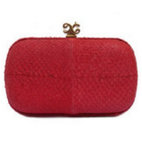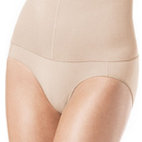Girl Meets Dress is in today’s Daily Mail newspaper and Femail online –¬† a feature about some new rental websites launching. By Rosie Green who tries out some fashion to hire.
Read the whole feature below >
“Yes, you can wear YSL for just ¬£80! And it’s all thanks to fashion’s new designer rental revolution. Stylist ROSIE GREEN, who has a phobia of second-hand clothes, puts it to the test . . .
There’s now a movement towards reworking and mending the clothes you own
A slew of new websites are redefining rental fashion for people of all sizes
Celebrity stylist Rosie Green tries out My Wardrobe HQ for designer looks at cut prices
Remember when we bought outfits to wear for one night only? Or proudly announced we were wearing ‘Primani’? Cheap, throwaway clothes used to feel fun ‚ÄĒ but now, in our eco-aware world, disposable fashion seems distasteful.
The facts are brutal: textile production contributes more to climate change than shipping and aviation combined. In the UK, we send a million tons of clothing to landfill every year. Not harmless fun, after all.
With fast-fashion out of fashion, there’s now a movement towards reworking and mending the clothes you already have. Or, if you have to buy new, consciously choosing quality over quantity.
Both are sustainable strategies I can get on board with, but the idea of renting clothes had never occurred to me. As a spoilt fashion stylist, I’ve always assumed I won’t find anything I’d actually want to hire. ‘Rental fashion’ feels like the reserve of twentysomething men going to Moss Bros for dinner jackets, or my mother’s generation borrowing hats for wedding season.
When I worked for glossy women’s magazines, styling everyone from Sarah Jessica Parker to Cameron Diaz, I used to borrow outfits from the designers to wear to big events. I once wore the green, slashed-to-everywhere palm-print Versace dress with built-in knickers that J.Lo made famous (yes, the exact same one ‚ÄĒ I didn’t mind sharing a gusset with her!).
But to do that often involves being a sample size (usually a tall size 8, which I never quite was) and on the radar of the labels you want to wear, which applies to about 0.0001 per cent of the population.
Now, though, a slew of new websites are redefining rental fashion: Hurr, Front Row, Nothing To Wear, By Rotation.
Instead of targeting mothers-of-the-bride, they are wooing women who want cool, luxe designer pieces they couldn’t otherwise afford.
They charge about 10 per cent of the retail price ‚ÄĒ so you could find yourself wearing a ¬£500 dress for just ¬£50 outlay ‚ÄĒ and are increasingly offering less expensive items. The millennial generation is using them for office outfits or lower-key Saturday nights.
Rent The Runway is the most famous. A slick U.S. company, valued at $1 billion, it has been a roaring success for ten years in America and is rumoured to be coming here later this year.
The British equivalent launching this month is My Wardrobe HQ. It is founded by Sacha Newall, former head of sales and marketing at my-wardrobe.com, and Tina Lake, previously a boutique owner and buyer for Sir Philip Green’s High Street fashion chains including Topshop.
They have been trialling the service since July.
Already a favourite with glamorous foodies the Hemsley sisters, and models Cara Delevingne and Arizona Muse, what makes My Wardrobe HQ (mywardrobehq.com) different is it combines a wide choice of rental labels ‚ÄĒ from the ultra-luxe YSL, Chloe and Australian label Zimmermann to more mid-market brands such as Ganni, Rixo and Joseph ‚ÄĒ with the option of renting out your own clothes, too. It’s peer-to-peer lending.
With a number of parties and events coming up for which I need killer outfits, I decide to road-test My Wardrobe HQ. It suits my limited budget and shopping time and, as I often post selfies, I don’t want my feed to be full of the same three dresses on rotation. The site lets you either rent an outfit as a one-off or join the subscriber service for ¬£9.99 a month.
This gets you a seasonal home visit from a My Wardrobe HQ stylist ‚ÄĒ meaning you can try on a range of outfits to see what works, then reserve your chosen outfit for the dates you need. (Stylists currently only travel within the M25, but the aim is to expand further.)
It costs from £30 to £200 to rent an outfit (prices are set for seven days, but you can rent for as long as you want).
Some clothes and accessories ‚ÄĒ shoes, bags and jewellery are also available ‚ÄĒ are sourced from the founders’ fashion contacts; some are bought new for rental, giving clients access to on-trend items that might be redundant after six months.
Some outfits still even have the tags on ‚ÄĒ if you’re lucky, you’ll get the first wear ‚ÄĒ and the clothes are constantly quality checked to ensure no signs of damage.
If you fall in love with a piece, you can also buy it (and it will be generally 30 per cent less than the official retail price).
I opt for the subscriber service and arrange a home visit. My stylist, Alessia Farnesi, a seasoned pro with more than 15 years’ experience across commercial, editorial and celebrity styling, arrives at my door with about 20 outfits. She emits positivity and has amazing personal style.
In the past, I’ve had mediocre experiences with at-home stylists, whom I’ve always, somewhat arrogantly, thought less qualified than myself. But Alessia has studied my Instagram profile to get a feel for my aesthetic.
She knows I like clean lines and feminine dresses with a bit of edge. She also has a good grasp of what would be flattering on my size 10, 5ft 10in frame. (Most of their pieces are size 8 to 14 and Alessia admits they could do with more outfits in larger sizes.) ‘I take the hard work out of it,’ she smiles, and her easy-going nature immediately puts me at ease.
Some outfits are dresses I would have chosen myself; others push me out of my comfort zone in a good way ‚ÄĒ there are colours I never normally consider, but which work brilliantly. Alessia is honest when things don’t suit my shape and genuine when they do. And the clothes are so beautiful they make me giddy with excitement.
The first outfit I try on is a YSL jumpsuit that is exquisitely cut with satin lapels and just the right amount of edge.
It fits like a glove and looks sexy and stylish. Perfect for the kind of occasion where you want to make an impact, but don’t want to look like you’ve tried too hard. I love it, but would never spend the ¬£1,000-plus it would have cost new. However, I can hire it for ¬£80.
Then comes a supremely flattering Amanda Wakeley jumpsuit (£90 to rent; £320 to buy), followed by a Saloni floral-patterned party dress (£80 to rent, £300 to buy used from the site; it would have been £800 new) that skims the body.
A silk V-neck red dress by Polish label Magda Butrym (originally £1,500, but £150 to rent) makes me feel like I could work any room. There is also a dress by top British designer Roksanda (worth £700, but just £60 to rent) which has a bold pattern, nipped-in waist and is very demure.
It’s amazing to try these pieces on in my own home. Not only can I see the quality and check the fit, but also how they work with my own accessories. Alessia’s edit means I’m not overwhelmed by choice and the buy-it-now prices are surprisingly reasonable. I’m also impressed that the items are all on-trend.
‘I love fashion and still get so excited to see the new season’s collections,’ says co-founder Tina. ‘Unfortunately, my budget can never keep up with my ‘lust list’, so rental allows me to nail all the trends without breaking the bank.’
Sacha’s motivation was greener: ‘I was doing some work in car-sharing. For every one car shared, 11 are less likely to be bought. I thought if we could apply the same idea to fashion, we would help solve the fast-fashion crisis that is destroying the planet.’
She adds: ‘Everyone loves beautifully made designer clothes, but few of us have the budget to buy them.
‘By offering people the chance to rent and resell their purchases, it allows them to trade up to what they really want, safe in the knowledge that if they buy well, the designer item will, in the long run, cost less than the High Street copy, which is only heading for landfill.’
Their core customer is predicted to be aged 25 to 55. ‘They might be working or stay-at-home mums,’ Sacha says. ‘But they all have a love of fashion.’
Both women recognise the need to reinvent dress hire. ‘The stereotype is the huge taffeta balldresses from the Eighties,’ laughs Sacha. ‘Think back to pre-fast-fashion, when every High Street had a dress hire shop. This is just a reinvention for a new generation.’
My Wardrobe HQ professionally dry-cleans its outfits after every wear. I saw no hint of foundation smudges/deodorant marks/cat hairs on anything.
If you spill something down your hired outfit or damage it, they will try their best to repair or clean it, but if it is ruined you will pay the ‘buy it now’ price.
Alessia asks me if there is anything I would like to rent out to other people.
I do have some designer pieces languishing in my wardrobe: a Dolce & Gabbana leopard-print crop top from my 20s that is probably not appropriate for a 40-plus mother; a pair of Marc Jacobs powder-blue studded Mary Janes that a) don’t fit and b) are so vertiginous they make walking an impossibility; a Matthew Williamson maxi-dress that cost an eye-watering amount but made me look pregnant; and some costume pearls that would make most people look cool, but me look frumpy.
None of these clothes are new season, but will form part of the site’s evergreen offering.
It makes me happy to think someone else could get joy from them. Perhaps I’ll also recoup some of my original spend. Someone might even buy them.
Alessia takes everything I bring out, except one dress deemed too damaged. If they are rented, I get 60 per cent of the revenue. That will be, for example, £50 per rental for the pearls.
The financial returns, according to Sacha and Tina, are 30 per cent better than selling on pre-loved designer sites because you get repeat business. If, at any time, I want my things returned, I just submit a request.
After a couple of enjoyable hours I reserve three outfits ‚ÄĒ the YSL jumpsuit, the Magda Butrym dress and the Saloni floral off-the shoulder dress.
Hiring the three items, for three occasions (I get to keep them for seven days each time), comes to a total of ¬£230 ‚ÄĒ and I’m hoping to offset this if my own items are rented or bought. The YSL is for a smart Press dinner, the Saloni for a 40th birthday party and the Magda for an awards ceremony.
I know the first time I wear a rented outfit I’ll be nervous. Will I be avoiding people with red wine and refusing to dance in case I, er, perspire? But the anxiety is a small amount to pay for the eco benefits. Plus I’ll feel fabulous.
After I have worn the clothes, My Wardrobe HQ sends a courier to collect them. The eco-friendly aspect of My Wardrobe HQ is more than just virtue-signalling. They even use green couriers and green cleaning methods using an environmentally friendly ‘ozone’ treatment.
‘When I headed up buying for High Street chains 20 years ago, we had no concept of the environmental damage we were doing,’ says Tina. ‘We would simply get excited about the fact we could produce a man-made fibre that felt like cashmere, which meant we could offer ‘cashmere touch’ jumpers for under ¬£20.
‘Twenty years later, I now know the one million jumpers I ordered are sitting in landfill somewhere and will never biodegrade.
‘We are at a tipping point. We must change the way we consume, or it will be catastrophic. The least damaging thing we can do is reuse and share. If we can move away from needing ‘new’ and embrace the idea of ‘new to me’, we are halfway there.’
Eco-friendly, financially savvy and good for the conscience? Count me in!
WHERE TO BORROW: THE BEST OF THE REST
GIRL MEETS DRESS
A Nationwide service offering designer dresses to rent for two or seven nights. Either pay as you go, or as a member, which gets you unlimited access for £99 per month (hire.girlmeetsdress.com).
More than 150 high-end brands stocked, such as Alexander McQueen, Victoria Beckham and Marc Jacobs. It includes categories such as weddings, birthdays and Ascot.
NOTHING TO WEAR
THIS rents out designer and vintage items across the UK for 15 per cent of their retail price. You can pay per item, or sign up to one of three monthly subscriptions (nothing-to-wear.com), which start from the Soho option at £90 for one day dress and one cocktail dress.
FRONT ROW
A London-only service, which allows you to access the latest designer clothing, at 10 to 25 per cent of the retail price ‚ÄĒ including Fendi, Chanel and Gucci.
If what you want doesn‚Äôt exist, vote for your ‚Äėfavourites‚Äô by sending in a photo, to be considered by the buyers (frontrow.uk.com).
HURR COLLECTIVE
Best for renting out your own clothes. Upload pictures of your items for rent, with a price and location. You have to pay P&P and for dry-cleaning. Rental periods start at seven days (hurrcollective.com)


 Designer A-Z
Designer A-Z 








